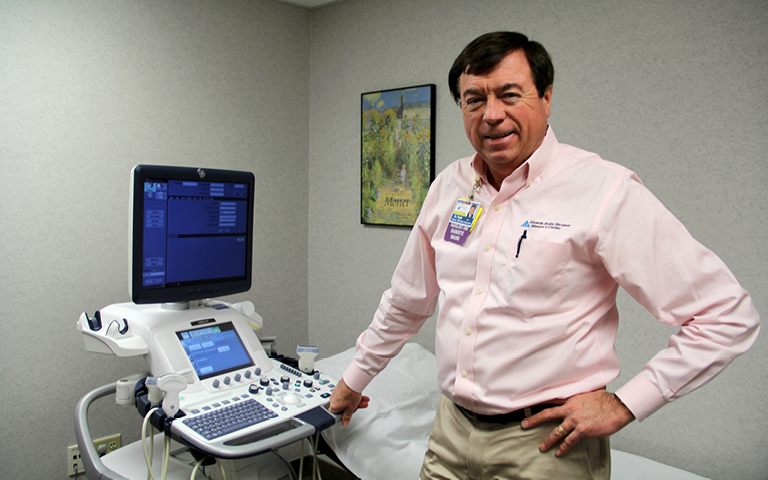In 1940, James T. Case, MD, of Santa Barbara, Calif., long prominent in the field of radiology, wrote, “A great opportunity and a duty confront American radiologists at this time when a tremendous change menaces the political and economic face of the earth. At last the United States has awakened to the need of preparing for national defense, and as a specialist group whose services will be required in a large and definite way, it is our privilege to foresee, aided by the experience of the last great war, the widening field of military roentgenology, both in preparation for defense and in view of possible need for offensive warfare. The problems are alike.”1
Case’s words still ring true today, according to Robert S. Pyatt Jr., MD, FACR, chair of the ACR Commission on General, Small, Emergency and/or Rural Practice (GSER). Pyatt, who conducted his internship and radiology residency training at the Walter Reed National Military Medical Center (formerly known as National Naval Medical Center) in Bethesda, Md., says, “Radiologists with military experience are dependable, reliable, focused — they know what needs to get done and they get it done.”
Pyatt, who believes that the key attributes of military experience can enhance a radiology career, played a significant role in the formation of the ACR subcommittees for military, teleradiology, VA, and critical access hospitals. Pyatt, who was awarded the Gold Medal, Radiologist of the Year Award by the Pennsylvania Radiological Society at its annual meeting in 2019, is also chair of the ACR
Committee for Fellowship Credentials (CFC) and, in that role, has been instrumental in expanding that honor to deserving and eligible military members. The Bulletin caught up with Pyatt, currently the co-founder and president of Chambersburg Imaging Associates in South Central Pennsylvania, to discuss his work in responding to the needs of military radiologists within the College.
Why was it important for the ACR to have a VA Subcommittee?
The VA health system takes care of millions of veterans — it’s one of the biggest health systems in the U.S. But despite their numbers, these members didn’t have a unique voice in the ACR. By building the subcommittee — which includes VA radiologists from all over the country — they can now work together on quality, safety, and advocacy. So VA radiologists have a unified voice, which helps facilitate two-way communication and activities between them and the ACR.
How is the ACR adapting to accommodate military radiologists?
Military radiologists often move around, and it’s really hard for them to be active in their state chapters. That’s an issue that has prevented some from applying for ACR fellowship. We’ve now made it clear that the CFC has a channel that military radiologists can go through, bypassing their state chapters, as many do not have long enough established contact to develop a state chapter relationship— therefore their applications are exempt from chapter review.
Now that the ACR has a military radiologist group — the Military Radiology Subcommittee of the GSER Network Committee — we’re much more responsive to military radiology issues like quality, safety, mass casualties, emergency radiology, and teleradiology. These radiologists have a lot of experience with issues that are of value to private practice and academic radiologists. We also have several issues in common. The same guidelines that are useful to private practice — such as screening mammography — also apply to the care and treatment of military families, so we need the input of military radiologists to make our system better.
What is unique about working within the VA?
I was very blessed to work with a number of extremely talented radiologists when I did my training. The Vietnam War had just ended, and there were many radiologists who were deferred from fighting and allowed to continue their training and education in fellowships. These radiologists, who served as faculty, used all of their new subspecialty talents — obtained at leading medical centers in the U.S. at that time — and education to train those of us who were residents at Bethesda Naval Hospital (now known as Walter Reed).
Because of how the military works, you’re relied on as a healthcare provider. There were certain evenings, weekends, and holidays when I had to be the Officer of the Day — the commander for the entire base — and deal with all types of issues. I’d receive a phone call that said, “Congressman X is coming in with a heart attack.” All the prominent figures in Washington, D.C. politics would go to Walter Reed Army Hospital or the National Naval Medical Center for their care because of the tighter security and privacy.

